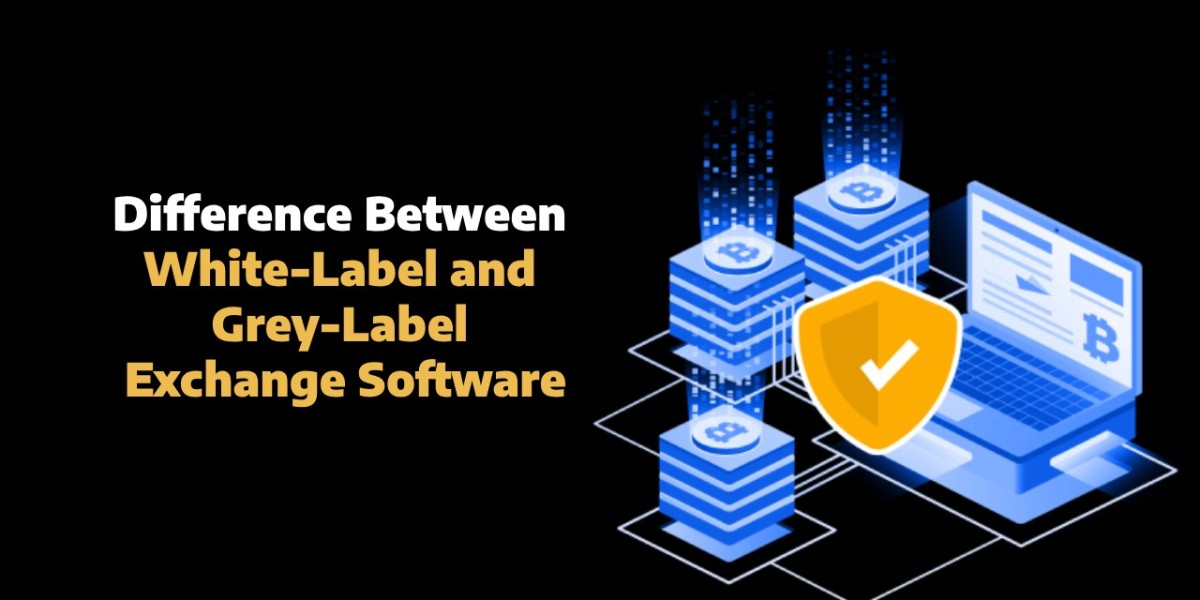In the rapidly evolving world of cryptocurrency trading, the choice of software can significantly impact the success of a trading platform. Two common options available to entrepreneurs and businesses looking to launch their exchanges are white-label and grey-label exchange software. Understanding the differences between these two can help in making an informed decision that aligns with your business goals.
What is White-Label Exchange Software?
A white-label crypto exchange platform is a ready-made solution that can be customized and branded as per the client’s requirements. This type of software provides a complete package, including the backend, frontend, and administrative functionalities necessary to operate a crypto exchange. Here are some key features of white-label exchange software:
1. Customizable Branding:
Clients can customize the user interface, logo, color schemes, and other branding elements to reflect their brand identity.
2. Quick Deployment:
Since the core functionality is already developed, the time to market is significantly reduced.
3. Comprehensive Features:
White-label solutions come with a full suite of features including a trading engine, wallet integration, KYC/AML modules, liquidity management, and more.
4. Technical Support:
Providers typically offer ongoing technical support, ensuring smooth operation and maintenance of the platform.
What is Grey-Label Exchange Software?
Grey-label exchange software lies somewhere between white-label and from-scratch development. It offers a semi-customizable solution with a set of predefined features. The customization options in grey-label software are more limited compared to white-label solutions. Here are some characteristics of grey-label exchange software:
1. Limited Customization:
While branding elements can be customized, other aspects like functionality and features are more rigid and predefined.
2. Faster Deployment:
Similar to white-label, grey-label solutions are quick to deploy but might require some additional development work to meet specific needs.
3. Cost-Effective:
Grey-label solutions are generally more affordable than fully customized white-label platforms due to their semi-custom nature.
4. Basic Support:
Technical support is provided, but it might be limited compared to the comprehensive support offered for white-label solutions.
Key Differences Between White-Label and Grey-Label Exchange Software
1. Customization:
- White-Label: Extensive customization options for branding and functionality.
- Grey-Label: Limited customization mainly focused on branding, with predefined functional features.
2. Deployment Time:
- White-Label: Quick deployment with comprehensive features ready to go.
- Grey-Label: Faster than developing from scratch but might need additional adjustments.
3. Cost:
- White-Label: Higher initial cost due to extensive features and customization options.
- Grey-Label: More cost-effective, suitable for startups with budget constraints.
4. Support and Maintenance:
- White-Label: Ongoing and comprehensive support.
- Grey-Label: Basic support, with possible limitations on technical assistance.
Choosing the Right Solution for Your Business
The choice between white-label and grey-label exchange software depends on various factors including your budget, time-to-market requirements, and the level of customization needed. If you are looking for a robust and feature-rich platform that can be fully tailored to your brand, white-label crypto exchange software is the ideal choice. On the other hand, if you need a more affordable and quicker solution with some degree of customization, grey-label software might be the better option.
In conclusion, both white-label and grey-label exchange software offer viable pathways to launching a cryptocurrency exchange. Understanding their differences will help you choose the one that aligns best with your business objectives and operational requirements. Whether you opt for the comprehensive features of a white-label crypto exchange platform or the budget-friendly grey-label option, the right software will be a crucial step toward your success in the cryptocurrency trading industry.








